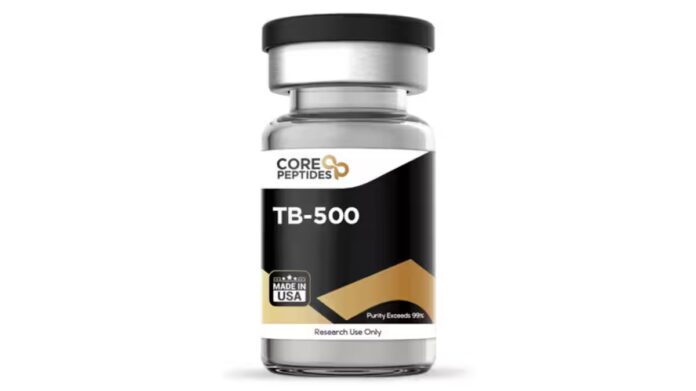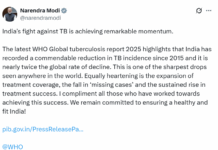TB-500, a synthetic version of a naturally occurring peptide called Thymosin Beta-4 (Tβ4), has gained significant attention in recent years for its potential roles in various fields of biological research. The peptide’s intriguing properties are largely attributed to its structural similarities to Tβ4, which is studied for its involvement in processes like cell migration, tissue repair, and wound healing. However, its speculative implications extend far beyond these initial roles. The versatility of TB-500 in multiple scientific domains, including regenerative science and inflammation modulation, and its potential in disease modeling make it a peptide of great interest to researchers across various fields.
Molecular Properties and Biological Functions of TB-500
TB-500 is a 43-amino acid peptide, which shares its primary sequence with a segment of Tβ4. The peptide is thought to primarily function by impacting actin, a protein that plays a critical role in cellular structure and movement. The peptide is believed to regulate actin dynamics, leading to cell migration and adhesion alterations. This regulation is considered particularly important in tissue repair and wound healing processes.
Studies suggest that by promoting the reorganization of the cytoskeleton, TB-500 may contribute to cellular processes like differentiation, proliferation, and migration, particularly in cells involved in healing and regeneration. The peptide is also thought to impact angiogenesis, forming new blood vessels from pre-existing ones. This may be particularly significant in tissues undergoing repair, as better-supported blood flow is essential for delivering nutrients and removing waste products. The hypothesized pro-angiogenic properties of TB-500 may provide valuable insights into research strategies to improve tissue regeneration.
Further exploration into TB-500’s possible role in cellular processes has suggested potential implications for inflammation regulation. Inflammation, particularly chronic conditions, may harm the research model. The peptide seems to modulate immune responses, possibly impacting the behavior of certain cytokines and immune cells. By balancing inflammatory responses, TB-500 may serve as a tool for investigating the molecular mechanisms of various inflammatory diseases and conditions.
TB-500 in Regenerative Science
The regenerative properties of TB-500 have been a focal point of investigations in recent years. Research suggests that TB-500 might significantly affect tissue regeneration, specifically in muscular and connective tissue. Its possible impact on cell migration and proliferation is believed to play a crucial role in these processes. Investigations purport that TB-500 might promote muscular tissue repair following injury, potentially accelerating recovery and improving overall healing. This may particularly interest researchers working on supporting recovery strategies for soft tissue injuries in various research models.
In addition to muscular tissue, TB-500’s role in connective tissue repair has also garnered attention. Since connective tissues, such as tendons and ligaments, are typically slow to heal, the peptide might be useful in speeding up the repair process. It has been hypothesized that TB-500 may reduce recovery time in research models of tendon and ligament injuries by supporting cellular migration and promoting tissue regeneration. The speculative potential of TB-500 in the context of chronic musculoskeletal conditions or supporting post-surgical recovery remains an area ripe for further exploration.
Moreover, investigations purport that the peptide may also have implications in other forms of tissue regeneration, including nerve tissue. Given its possible role in cell migration and proliferation, TB-500 might support nerve regeneration following injury. Investigations into nerve repair mechanisms have explored a variety of molecular candidates, and TB-500 may prove valuable in this context due to its potential impact on cell behavior in regenerating tissues.
TB-500 in Inflammation and Immunity Research
It has been theorized that TB-500 may also offer a new avenue for exploring inflammation and immune modulation beyond tissue repair. Inflammation is a complex biological response that facilitates healing or contributes to tissue damage if dysregulated. Inflammatory conditions are prevalent in various disease states, including autoimmune diseases, chronic infections, and even some forms of cancer. The findings imply that the peptide might serve as a helpful tool in understanding the underlying mechanisms of these conditions.
Research indicates that TB-500 may impact the expression of cytokines, which are signaling proteins that mediate immune responses. By modulating the activity of these cytokines, TB-500 appears to alter the inflammatory environment within tissues. The peptide has been proposed to impact immune cell activity, particularly in response to injury or infection, and its properties may be studied to understand better immune system responses in both acute and chronic settings.
For instance, scientists speculate that TB-500 might help to control the balance between pro-inflammatory and anti-inflammatory cytokines. This modulation may have significant implications in developing strategies for conditions where inflammation plays a key role, such as rheumatoid arthritis, inflammatory bowel disease, or neuroinflammatory disorders. The peptide’s speculative potential to impact immune responses and mitigate excessive inflammation makes it a compelling candidate for further exploration in immune-based research.
TB-500 in Disease Models and Pathology
In addition to its potential in regenerative science and inflammation regulation, TB-500 is postulated to have implications in creating disease models, particularly for conditions where tissue repair or inflammation plays a central role. By modulating the regenerative capacity of tissues, the peptide has been hypothesized to serve as a valuable tool in understanding the pathophysiology of various diseases, such as cardiovascular diseases, neurodegenerative disorders, or autoimmune conditions.
For example, TB-500’s potential to support tissue regeneration might be particularly useful in disease models of myocardial infarction (heart attack) or stroke, where tissue damage occurs due to reduced blood supply. The peptide’s potential to impact angiogenesis might support efforts to restore blood flow in damaged tissues, providing a new avenue for investigating research approaches to these conditions.
Additionally, TB-500 is believed to hold promise in neurodegenerative disease models, such as Alzheimer’s or Parkinson’s disease. These conditions are marked by progressive tissue degeneration, and the peptide’s potential impact on tissue repair might offer insights into supporting neuronal survival or promoting neural regeneration. Furthermore, TB-500 is speculated to be utilized in exploring neuroinflammation mechanisms, which contribute to the progression of various neurodegenerative diseases.
The Future of TB-500 in Scientific Research
As the understanding of TB-500’s molecular functions expands, its implications in research are likely to increase. Studies suggest that the peptide might be integrated into new research methodologies, particularly in areas focused on tissue repair, inflammation modulation, and disease modeling. Investigations into its properties in tissue regeneration might lead to the development of novel strategies for various conditions.
While much remains to be discovered regarding the full range of TB-500’s potential implications, its involvement in fundamental biological processes suggests that it may be an invaluable tool for researchers exploring regenerative science, inflammatory diseases, and cancer. However, its precise mechanisms of action and impact on different tissue types remain subjects of ongoing investigation. Research-grade TB-500 for sale is available online.
References:
- Goldstein, A. L., Hannappel, E., & Kleinman, H. K. (2005). Thymosin beta 4: Actin-sequestering protein moonlights to repair injured tissues. Trends in Molecular Medicine, 11(9), 421–429. https://doi.org/10.1016/j.molmed.2005.07.004
- Crockford, D., Turjman, N., Allan, C., & Angel, J. (2010). Thymosin beta4: Structure, function, and biological properties supporting current and future clinical implications. Annals of the New York Academy of Sciences, 1194(1), 179–189. https://doi.org/10.1111/j.1749-6632.2010.05492.x
- Sosne, G., & Kleinman, H. K. (2015). Primary mechanisms of thymosin β4 repair activity in dry eye disorders and other tissue injuries. Investigative Ophthalmology & Visual Science, 56(9), 5110–5117. https://doi.org/10.1167/iovs.15-16890
- Shah, R., Reyes-Gordillo, K., Cheng, Y., Varatharajalu, R., Ibrahim, J., & Lakshman, M. R. (2018). Thymosin β4 prevents oxidative stress, inflammation, and fibrosis in ethanol- and LPS-induced liver injury in mice. Oxidative Medicine and Cellular Longevity, 2018, 9630175. https://doi.org/10.1155/2018/9630175
- Zhu, J., Su, L. P., Ye, L., Lee, K. O., & Ma, J. H. (2012). Thymosin beta 4 ameliorates hyperglycemia and improves insulin resistance of KK Cg-Ay/J mouse. Diabetes Research and Clinical Practice, 96(1), 53–59. https://doi.org/10.1016/j.diabres.2011.12.009








